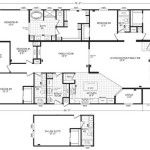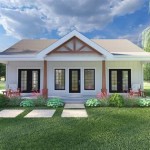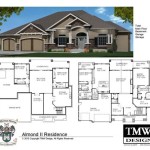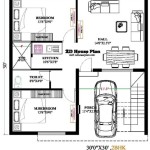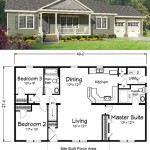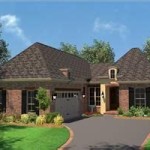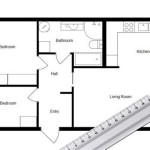House Plans With a Great Room: A Modern Hub for Living
The great room, a central and expansive living space, has become a highly sought-after feature in contemporary house plans. Functioning as a unified area for relaxation, entertainment, and even dining, the great room design reflects a desire for open-concept living. This article explores the key characteristics, benefits, and design considerations associated with house plans incorporating a great room.
Historically, homes featured segregated rooms, each designated for a specific purpose. The living room served as a formal space for receiving guests, while the family room offered a more casual area for everyday living. The great room represents a shift away from this compartmentalized approach. By combining the functions of multiple rooms into one large open space, the great room promotes interaction, flexibility, and a sense of spaciousness.
A great room typically integrates the living area with other functional spaces, often including the kitchen and dining area, creating a seamless flow throughout the main level of the home. The size of a great room can vary significantly depending on the overall square footage of the house, ranging from a generous 400 square feet in smaller homes to well over 1000 square feet in larger, more luxurious designs. Defining features often include high ceilings, large windows for natural light, and a focal point such as a fireplace or built-in entertainment center.
The popularity of house plans featuring a great room stems from several advantages, centered around modern lifestyle expectations. These benefits impact the flow of daily life, the ability to entertain, and the overall feel of the home.
Enhanced Social Interaction and Family Connectivity
One of the primary benefits of a great room is its ability to foster social interaction and family connectivity. The open layout eliminates physical barriers, allowing family members to easily interact with one another, regardless of their activity. For example, parents can supervise children playing while preparing meals in the adjoining kitchen. Similarly, the open design allows for effortless conversation and interaction during social gatherings.
The open flow encourages a sense of togetherness and reduces the feeling of isolation that can sometimes occur in homes with more compartmentalized layouts. This is particularly beneficial for families with young children, as it allows for constant visual connection and parental supervision. Furthermore, the unified space simplifies entertaining, allowing hosts to easily interact with guests while preparing food or drinks. The increased sense of connection contributes to a more vibrant and engaging home environment.
The placement of furniture within the great room can further enhance this sense of connectivity. Arranging seating areas to face each other encourages conversation and interaction. Incorporating features like a kitchen island with bar seating provides a natural gathering spot for casual conversation and interaction.
Increased Flexibility and Adaptability
The open nature of a great room provides a high degree of flexibility and adaptability, allowing homeowners to customize the space to suit their evolving needs. The lack of fixed walls and defined boundaries allows for a multitude of layout options and furniture arrangements.
A great room can be easily adapted to accommodate different activities, from hosting large parties to enjoying quiet family evenings. The space can be divided into distinct zones, such as a reading nook, a media area, or a play area, without the need for permanent partitions. This flexibility is particularly valuable for families with growing children, as the space can be easily reconfigured to meet changing needs over time.
Furthermore, the open layout facilitates the integration of technology and smart home features. Wireless speakers can be easily positioned throughout the space, and large-screen televisions can be mounted on walls without disrupting the flow of traffic. The adaptability of the great room makes it a versatile and future-proof living space.
The design of the great room can also incorporate flexible storage solutions, such as built-in shelving and modular furniture, to maximize space and minimize clutter. This allows homeowners to customize the space to reflect their personal style and preferences, while maintaining a functional and organized living environment.
Improved Natural Light and Ventilation
House plans with a great room often feature large windows and sliding glass doors, maximizing natural light and ventilation throughout the space. The open layout allows light to penetrate deep into the home, creating a bright and airy atmosphere.
Increased natural light can have a positive impact on mood, productivity, and overall well-being. Studies have shown that exposure to natural light can help regulate circadian rhythms, improve sleep quality, and reduce symptoms of seasonal affective disorder. The great room design, with its emphasis on natural light and open space, can contribute to a healthier and more enjoyable living environment.
Furthermore, the inclusion of multiple windows and doors facilitates cross-ventilation, allowing fresh air to circulate throughout the home. This can help to improve indoor air quality, reduce humidity, and create a more comfortable living environment. The strategic placement of windows and doors can also take advantage of prevailing breezes, providing natural cooling during warmer months.
Careful consideration should be given to the orientation of the great room to maximize sunlight and minimize solar heat gain. In warmer climates, it may be desirable to orient the great room to the north or east to minimize direct sunlight exposure during the hottest parts of the day. In cooler climates, orienting the great room to the south can help to capture more sunlight and provide passive solar heating.
In addition to the benefits listed above, a great room often increases the perceived value of a home. The open, airy layout and modern design appeal to many potential buyers. The space is often seen as a desirable feature that enhances the overall living experience.
While the great room offers numerous advantages, careful planning and design considerations are crucial to ensure that the space is both functional and aesthetically pleasing. Considerations include noise control, zoning, and the overall architectural style of the home.
Acoustics can be a significant concern in large open spaces. Hard surfaces, such as hardwood floors and drywall ceilings, can reflect sound and create echoes, making it difficult to hear conversations or enjoy music. To mitigate these issues, it is important to incorporate sound-absorbing materials, such as area rugs, upholstered furniture, and acoustic panels. Strategic placement of these materials can help to reduce reverberation and improve the overall acoustic quality of the great room.
Zoning is another important consideration in great room design. While the space is open and unified, it is often necessary to define distinct zones for different activities. This can be achieved through the use of furniture placement, area rugs, changes in flooring, or subtle architectural features, such as partial walls or columns. For example, a large area rug can be used to define a seating area in front of a fireplace, while a different type of flooring can be used to delineate the kitchen area.
The design style of the great room should complement the overall architectural style of the home. Whether the home is traditional, modern, or contemporary, the great room should reflect the same aesthetic principles. For example, a traditional home might feature a great room with a fireplace, hardwood floors, and traditional furniture, while a modern home might feature a great room with clean lines, minimalist décor, and large windows.
Consideration must also be given to lighting. A combination of ambient, task, and accent lighting can create a warm and inviting atmosphere, while providing adequate illumination for different activities. Recessed lighting can provide general illumination, while pendant lights can be used to highlight specific areas, such as a kitchen island or dining table. Task lighting, such as reading lamps, can be used to provide focused illumination for specific tasks.
The selection of materials and finishes is also an important aspect of great room design. Durable and low-maintenance materials are often preferred, as the great room is typically a high-traffic area. Hardwood flooring, tile, and engineered wood are popular choices for flooring, while durable fabrics and finishes are recommended for furniture. The color palette should be cohesive and harmonious, creating a sense of visual unity throughout the space.
Ultimately, a well-designed great room can be a valuable asset to any home, providing a versatile and inviting space for living, entertaining, and connecting with family and friends. Careful planning and attention to detail are essential to ensure that the great room is both functional and aesthetically pleasing, creating a comfortable and enjoyable living environment.

Modern House Plan With 2 Car Garages Auto Court And Terrises 3346

Home Plans With Great Room House And More

10 Great Room Floor Plans With Amazing Photos The House Designers

Ranch House Plans A Craftsman With Lots Of Outdoor Spaces

10 Great Room Floor Plans With Amazing Photos The House Designers

Two Story Luxury Traditional House Plan 1631

Craftsman House Plan With Vaulted Great Room 2470 Sq Ft 60631nd Architectural Designs Plans

Home Plan Auburn Sater Design Collection

Modern House Plan With Two Story Great Room 18831ck Architectural Designs Plans

Craftsman Style House Plans Big And Small Houseplans Blog Com

